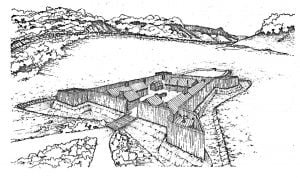Perrys, Colemans, Trotters, &c
There were other early settlers in that part of Edgefield bordering on Big Saluda and Persimmon Creek, not yet mentioned. These were the Perrys, Colemans, Trotters, Berrys, Nunns, Summerses, Rileys, and McCartys, to say nothing as yet of the Brookses. As the settlements in Abbeville began about the same time with those on the Saluda side of Edgefield, we will make a little excursion into that county. Both counties being parts of the original District of Ninety-Six their histories are necessarily very intimately connected. In the year 1756, the same year in which the Culbreaths came to “Scotland,” Patrick Calhoun, … Read more


